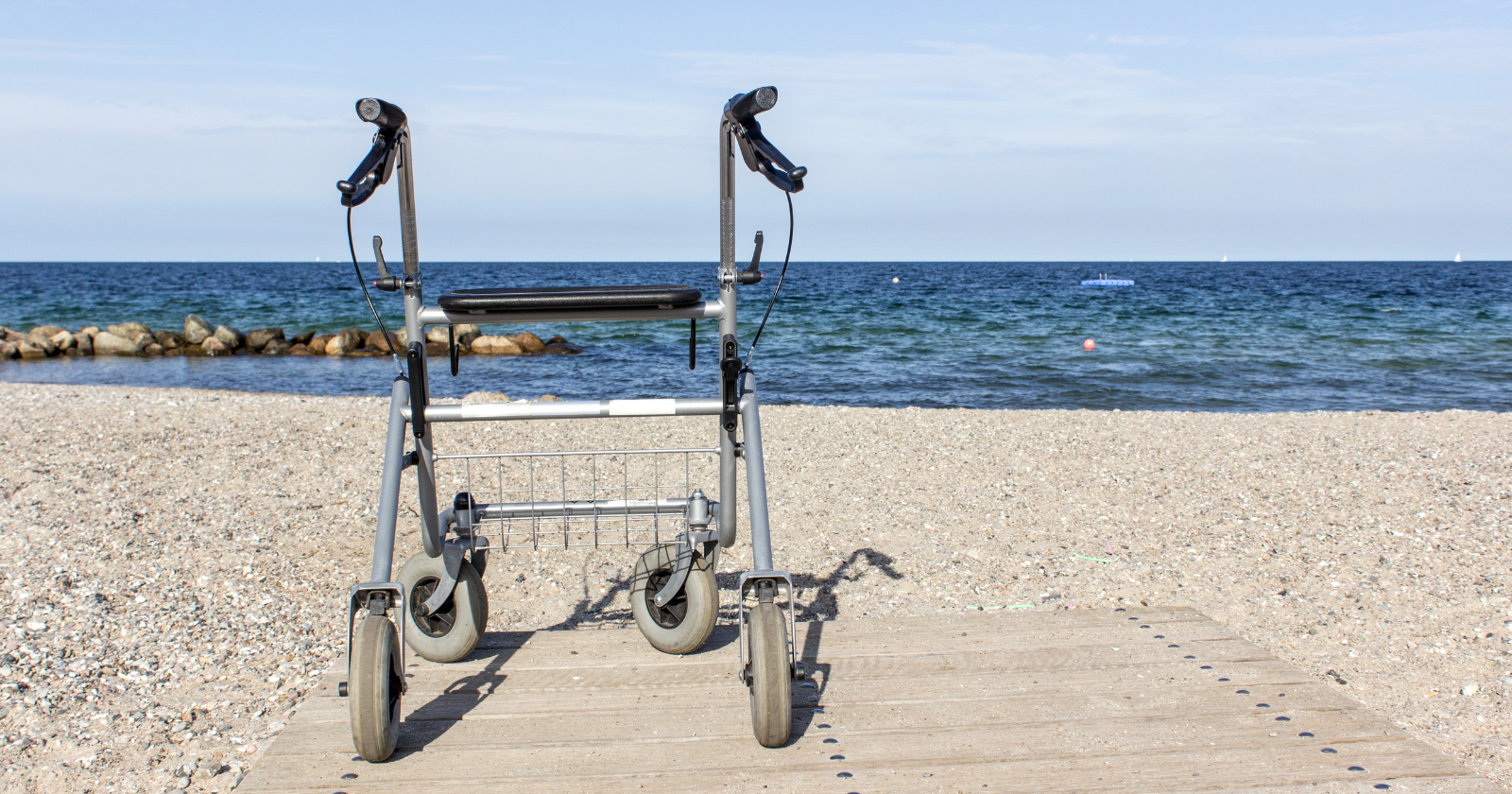Are you or a loved one needing a mobility aid but unsure which one to choose? Welcome to our comprehensive guide on the Different Types Of Walkers. With many options, figuring out which is right for you can be challenging. But don’t worry, and we’re here to help! In this article, we’ll explore the most popular walkers on the market and their unique features and provide tips on navigating the different types of walkers. Whether you’re looking for a standard walker, a walker with wheels, or even a knee scooter, we’ve got you covered. Let’s dive in!

So Let’s Take A Look At The Different Types of Walkers Available
1. Standard Walkers
Different types of walkers for seniors are available on the market, from standard walkers to more specialized models. Standard walkers are the most basic type, typically made of metal tubing with plastic hand grips. Most standard walkers have four legs, although some models have three legs. These walkers are designed for use on level ground and may not be suitable for use on uneven or slippery surfaces.
In addition, standard walkers typically don’t have any features that allow them to be easily folded or transported. As a result, they’re not the best choice for people who need a Walker that can be easily stored or transported. However, standard walkers are usually the most affordable option, and they can be a good choice for people who only need occasional use of a walker.
Standard walkers
- Easily Folds Up
- Made From Sturdy Aluminum
- Safe & Easy to Use
- Maximum Stability
If you click this link and purchase, we earn a commission at no additional cost.


2. Standard walkers with two wheels
Different types of walkers for seniors are available on the market, but one of the most popular is the standard walker with two wheels. This type of walker is designed to provide stability and support while you are walking, and it can be an excellent option for people who have difficulty walking without assistance.
The two wheels allow you to move the walker forward quickly and make it easier to turn corners. In addition, the wheels can help to absorb some of the impacts as you walk, making it a more comfortable experience. If you are considering a walker for yourself or a loved one, a standard walker with two wheels may be a good option.
Walkers with two wheels
- Easily Folds Up
- Made From Sturdy Aluminum
- Safe & Easy to Use
- Maximum Stability
If you click this link and purchase, we earn a commission at no additional cost.


3. Walker with Three wheels
There are various types of walkers on the market, but the three-wheeled walker is becoming increasingly popular. Different Types of Walkers? How about a Three-wheeled walker offers several advantages over traditional four-wheeled walkers? First, they are more maneuverable, making them ideal for tight spaces. Second, they are less likely to tip over, making them safer.
Third, they are lighter and easier to transport, making them a good choice for seniors with difficulty lifting heavy objects. Finally, three-wheeled walkers for seniors typically cost less than four-wheeled walkers, making them a more budget-friendly option. Whether you’re looking for a Walker with Three wheels for yourself or a loved one, there are several options.
Walkers with three wheels
- Lightweight
- Easily Folds Up
- Safe & Easy to Use
- Maximum Stability
If you click this link and purchase, we earn a commission at no additional cost.
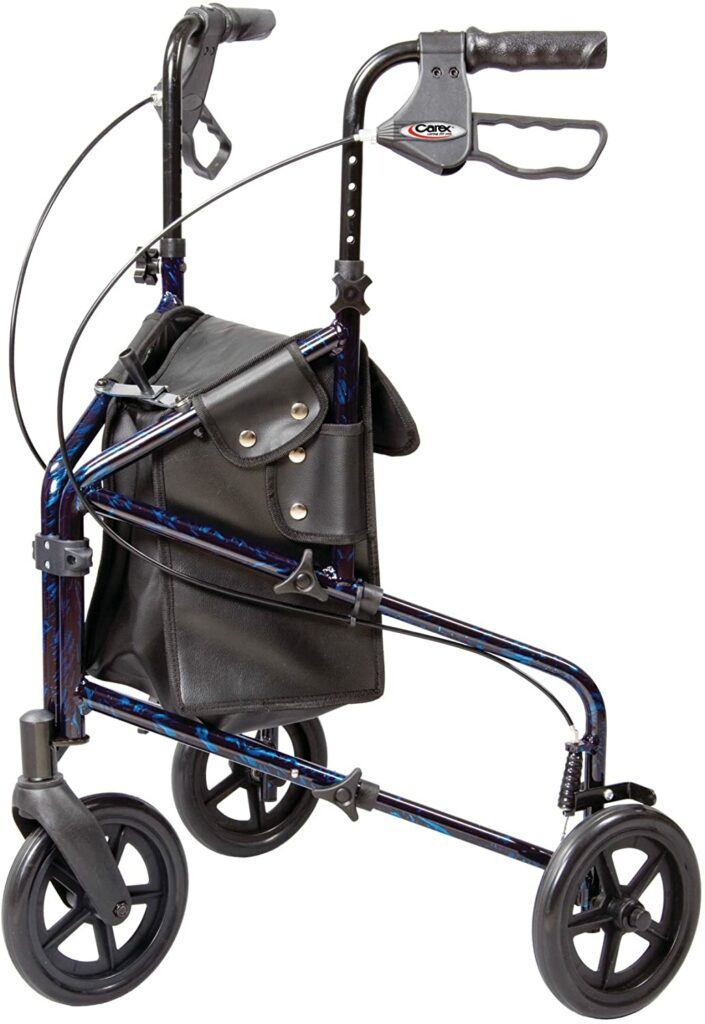

4. Rollator or walker with four wheels
There are a few other things to consider regarding the different types of walkers. For starters, do you want a traditional walker with two wheels or a more modern Rollator with four wheels? If you primarily use your walker for stability and balance, then a two-wheeler might be the way to go.
However, a four-wheel Rollator might be a better option if you’re looking for a walker that will also help you with mobility. There are also different sizes and different types of walkers to consider. For instance, some walkers have wide seats allowing you to rest when needed, while others are designed for smaller spaces. Ultimately, the best walker for you is the one that meets your specific needs and budget.
Rollators (4 wheels)
- Shock Absorbers
- Easy Rolling and Safe
- Customized Setting
- Dual Hand Brake System
If you click this link and purchase, we earn a commission at no additional cost.


5. Knee Scooter
If you’ve ever had a knee injury, you know the challenges of getting around. For many people, a knee scooter can be a lifesaver. Knee scooters are different from regular walkers in a few ways. First, they have four wheels instead of 2, which makes them more maneuverable.
They also have a padded knee rest, taking some weight off your injured leg. And finally, they typically have hand brakes, which give you more control over your speed and stopping. Whether recovering from surgery or an ongoing injury, a knee scooter can help you get around without pain or fatigue.
Similarly, a knee scooter is a type of walker that supports the entire lower body, including the knees and hips. This type of walker can be helpful for people who have difficulty moving their legs or need additional support to stay upright. Ultimately, different types of walkers can benefit different needs, so choosing the right kind is important.
Knee Scooter
- All Terrain Freedom
- Advanced tie-rod steering
- Adjustable knee pad
- Heavy Duty steel frame
If you click this link and purchase, we earn a commission at no additional cost.
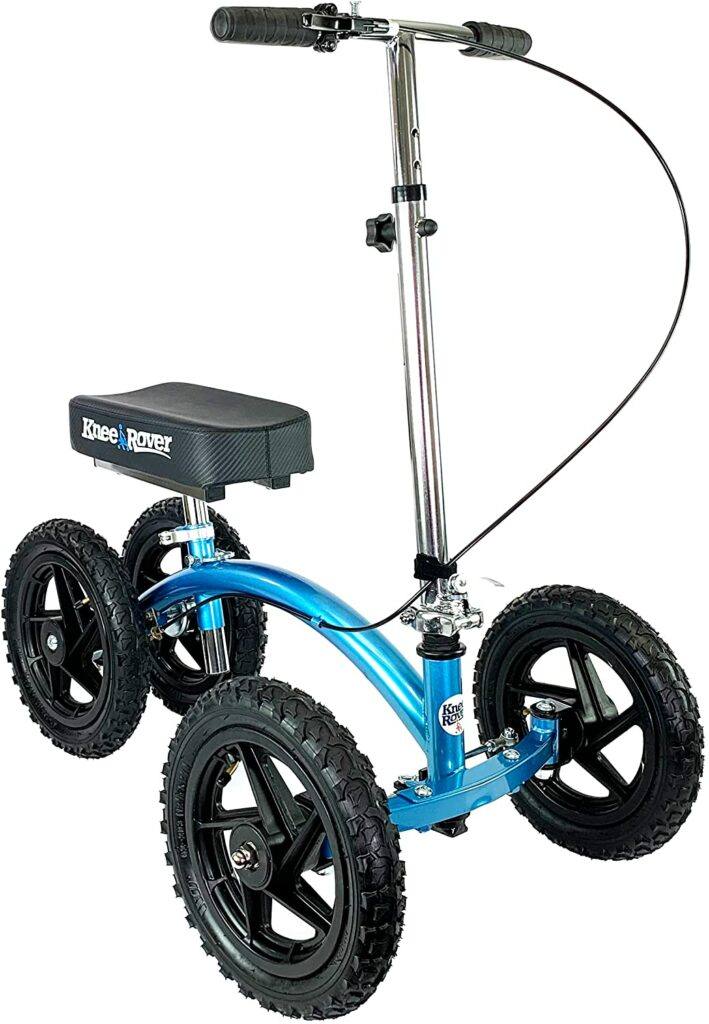

Here are a few things to consider when buying any walker
Why use a walker?
The Different Types of Walkers are standard mobility aid that can provide support and stability for those with difficulty walking. Different types of walkers are available, and each style has its advantages. For example, standard walkers typically have four legs and two handles, making them ideal for flat surfaces. Rolling walkers, on the other hand, have wheels on all four legs, making them easier to maneuver over different types of terrain. No matter which type of walker you choose, they can all help you to remain independent and active.
The grips and handholds
Different Types of Walkers are excellent tools for people who need help with balance or mobility. However, different types of walkers come with various grips and handholds. Some have traditional handles, while others have more ergonomic designs. Some have built-in hand grips or handholds. Each type has its advantages and disadvantages.
Traditional handles are the most common type of grip on a walker. They are easy to hold onto and provide good support for the user. However, they can be uncomfortable for people with arthritis or other conditions that cause hand pain. Ergonomic grips are designed to provide more comfort and support for the user.
They can be easier to hold onto and reduce pain in the hands. However, they may be more expensive than traditional grips. Built-in hand grips or handholds provide extra support and stability for the user. They can be very helpful for people who have trouble holding onto a traditional grip. However, they may not be as comfortable for people with arthritis or other conditions that cause hand pain.
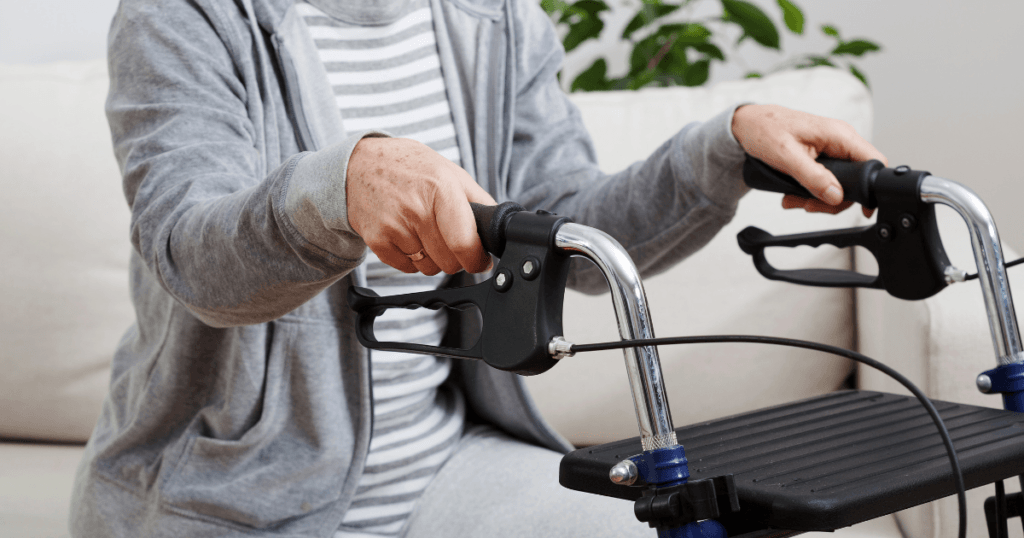
The Legs
Depending on your needs, various walker options, including aluminum or steel construction, are available. Some may have height-adjustable legs that allow different heights based on what feels most comfortable – check this before choosing one! Different Types of Walkers can also come with bariatric tubing, so they’re perfect if the size isn’t an issue, but instead, stability and strength are required. At the same time, other models exist without these features, which still provide adequate support even in rough terrain.
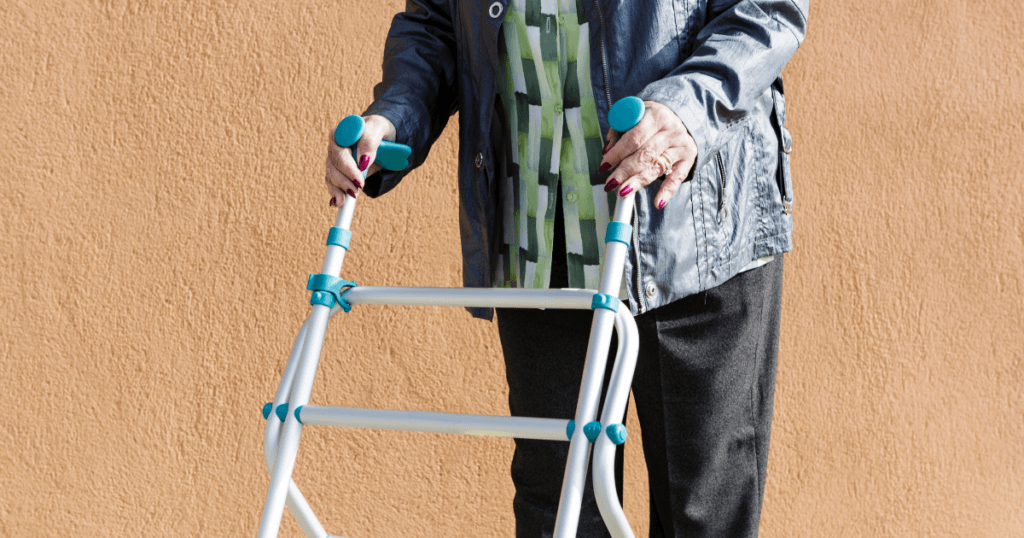
The wheels
Wheeled walkers provide an incredible level of ease when navigating through your day. In two-wheeled models, the casters do not swivel. At the same time, with three or four-wheeled options, you have more mobility and maneuverability available to accommodate changes in terrain types, from smooth concrete surfaces outdoors to grassy fields at home! Plus, if locks are needed, these also offer more excellent stability so that even on the rugged ground, they won’t fall apart underfoot, as some may worry about happening despite being made out of sturdy materials such as steel and aluminum.
The seat
When most people think of a walker, they picture an elderly person slowly walking down the hall with a metal frame and four legs. However, Different Types of Walkers can be used for different purposes. For example, some walkers have seats built into them, which can be helpful for people who need a break or cannot stand for long periods. Other types of walkers have wheels attached, making maneuvering around obstacles easier. No matter what kind of walker you use, they all serve the same primary purpose- to provide support and stability.

The brakes
There are other brakes on walkers, and each style has advantages and disadvantages. The most common type of brake is the hand brake, activated by squeezing a lever on the handlebar. This type of brake is easy to use and provides good stopping power, but it can be challenging to apply evenly, which can cause the walker to veer to one side.
Another common type of brake is the foot brake, activated by pressing down on a pedal with your foot. This type of brake is easier to apply evenly than a hand brake, but it can be more challenging to reach if you have limited mobility. Finally, some walkers have an electromagnetic brake, activated by a button on the handlebar. This type of brake is very easy to use, but it can be less effective in stopping the walker than other brakes.

Do they fold up?
If you’re looking for Different Type of Walkers, you’ll want to look for a folding walker or rollator. Both of these types of walkers are designed for easy storage and transportation, and they offer different features that can be beneficial depending on your needs. Folding walkers typically have two legs with wheels, while rollators have four legs with wheels.
Both types of walkers can be folded up to fit in the trunk of a car or inside a closet. Consider your needs and preferences when choosing between a folding walker and a rollator. A folding Walker may be the better option if you need a lightweight and easily maneuverable Walker. However, a rollator may be better if you need a more stable Walker with more features.
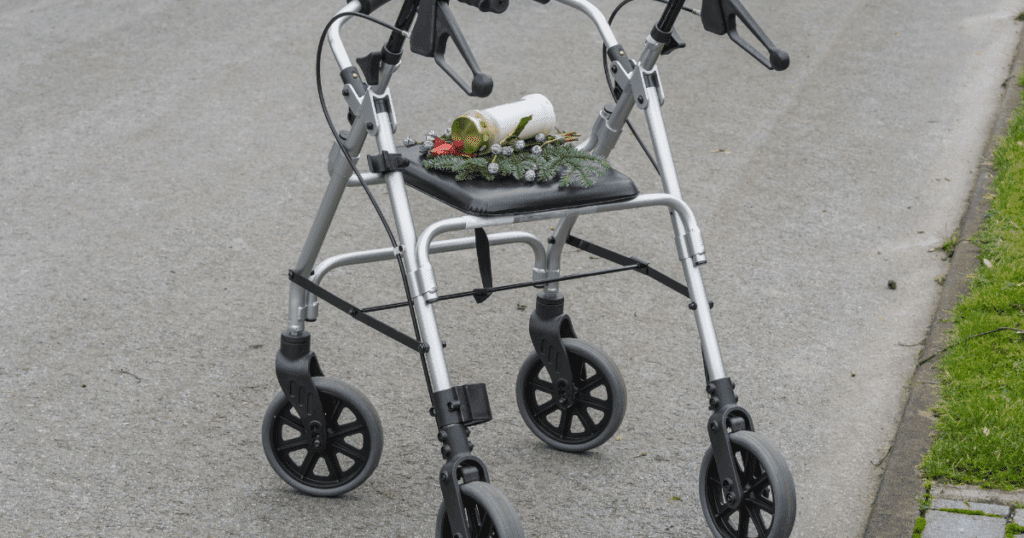
What are your needs?
If you need help getting around, you’re not alone. More than 18 million Americans use some walking aid, according to the National Institute on Aging. But with so many types of walkers on the market, how do you know which is right for you?
The first step is to assess your needs. If you have trouble balancing or lack the strength to lift a traditional walker, you may want to consider a rolling walker. These walkers have wheels on all four legs, making them easier to maneuver. A lightweight aluminum model may be all you need if you only occasionally use a walker for short distances. A sturdier steel model may be better for more strenuous use or for navigating uneven terrain.
Once you’ve determined what type of walker you need, it’s essential to ensure it’s properly fitted. The hand grips should be at waist level, and the legs should be set at a comfortable width. You should also ensure the wheels are correctly inflated, and the brakes are in good working order. You can find the perfect walker to meet your needs with some research. So do your research on Different Types of Walkers that are available.
Where are you going to be using it?
When choosing Different Types of Walkers, consider what indoor vs. outdoor use you plan on having yours for. For those who live in homes with wider doorways but don’t go outside often (or ever), a lightweight aluminum model is perfect since it can easily support one’s weight without feeling too heavy or difficult to move around indoors while offering more durability than metal models that would otherwise be ideal if going through doors regularly outdoors due their large size required by larger wheels which makes them less agile especially when navigating hallways in your house.

Speed Control
When it comes to rollators, the best ones are designed with safety features that keep you safe. For example, they have speed resistance systems, so there’s no chance of going too fast or accelerating while climbing hillsides, making retrieval much easier if anything goes wrong!
What is the Proper Height of a Walker?
You should always check the height of your walker before using it. If you are putting strain on any part of your body, then there’s no wonder that aches and pains come along for the ride! To avoid unnecessary pain using proper fitters’ equipment, stand up straight with arms hanging relaxed at the sides while gripping handles tightly (about 15-20 degree bend).
More Walker Articles Here
Keep those babies rolling
In conclusion, the world of walkers is diverse and tailored to meet various needs and preferences. There’s a perfect fit for everyone, from standard walkers to knee scooters. The key is to assess your needs, consider where you’ll be using the walker, and ensure it’s properly fitted. Remember, the best walker for you is the one that meets your specific needs and enhances your mobility. We hope this article has provided you with a clearer understanding of the different types of walkers available. Feel free to comment below and let us know which type of walker works best for you. Stay mobile, stay independent!

